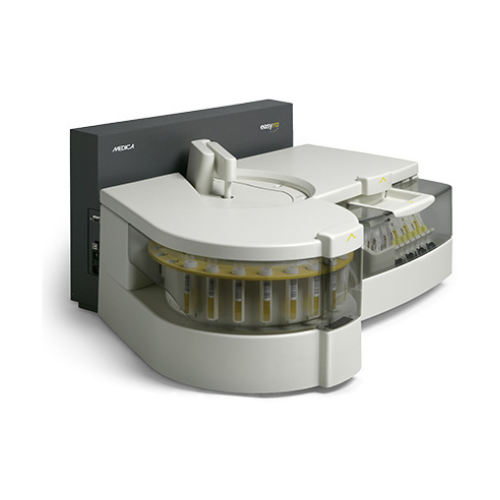For Business Use Only. Does Not Ship to Residential Addresses. For use inside an Analyzer, Sold Separately.
Thermo Kit Buprenorphine TSC
Thermo Kit Buprenorphine TSC
Product Code: 100190
Manufacturer: Thermo Scientific
Shipping Weight: 2.00lbs (0.91kg)
Specifications
Control Sets: CEDIA Buprenorphine Control Set
Description: CEDIA Buprenorphine Drugs of Abuse Assays
Detectable Analytes: Buprenorphine
DoA Calibrators: CEDIA Buprenorphine Calibrators
Quantity: 3 x 17mL
Storage Requirements: 2° to 8°C
Intended Use
The CEDIATM Buprenorphine Assay is a homogenous enzyme immunoassay for qualitative or semi-quantitative determination of the presence of buprenorphine in human urine at cutoff concentration of 5 ng/mL. The assay provides a simple and rapid analytical screening procedure to detect buprenorphine in human urine.
Summary and Explanation of The Test
Buprenorphine is a semi-synthetic opioid analgesic derived from thebaine, a component of opium. Buprenorphine resembles morphine structurally but has both antagonist and agonist properties. Buprenorphine has a longer duration of action than morphine and can be administered sublingually as an analgesic. Subutex®, a higher dose buprenorphine formulation, is widely used in Europe and elsewhere as a substitution treatment for opiate addiction. Recently, the FDA has approved the use of Subutex and Suboxone® containing buprenorphine as active drug, for the treatment of opiate dependence in the US. The antagonist potency was reported as equivalent to naltrexone. Subutex and Suboxone are the first narcotic drugs available under the US Drug Abuse Treatment Act (DATA) of 2003 for the treatment of opiate dependence that can be prescribed in the US in a physician’s work place. It has also been shown that buprenorphine has abuse potential and may itself cause dependency. In addition, a number of deaths have been recorded as a result of overdose with intravenously injected buprenorphine in conjunction with other psychotropic drugs such as benzodiazepines. Buprenorphine is metabolized primarily by N-dealkylation to form norbuprenorphine and by conjugation to form glucuronide-buprenorphine and glucuronide-norbuprenorphine.
The CEDIA Buprenorphine Assay uses recombinant DNA technology (US Patent No. 4708929) to produce a unique homogeneous enzyme immunoassay system. The assay is based on the bacterial enzyme β-galactosidase, which has been genetically engineered into two inactive fragments. These fragments spontaneously re-associate to form fully active enzymes that, in the assay format, cleave a substrate, generating a color change that can be measured spectrophotometrically.
In the assay, analyte in the sample competes with analyte conjugated to one inactive fragment (enzyme donor) of β-galactosidase for a limited number of antibody binding sites. If analyte is present in the sample, it binds to antibody, leaving the inactive enzyme fragment free to form active enzyme. If the analyte is not present in the sample, antibody binds to analyte conjugated on the inactive fragment, inhibiting the re-association of inactive β-galactosidase fragments, and no active enzyme is formed. The amount of active enzyme formed and resultant absorbance change are directly proportional to the amount of analyte present in the sample.











